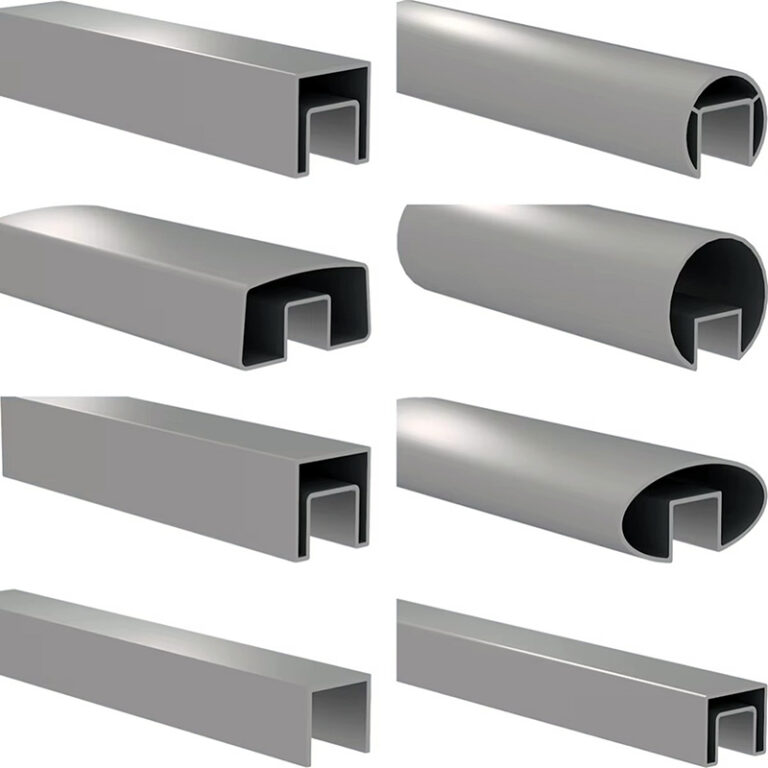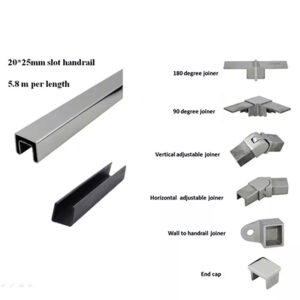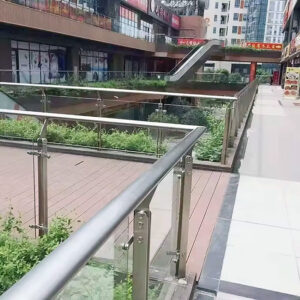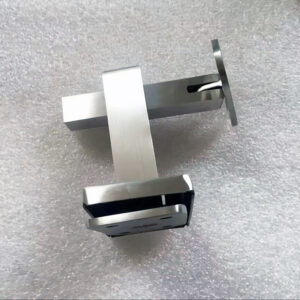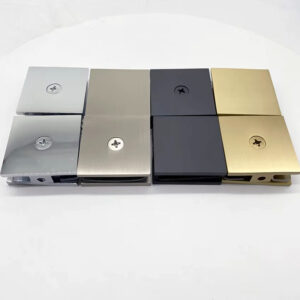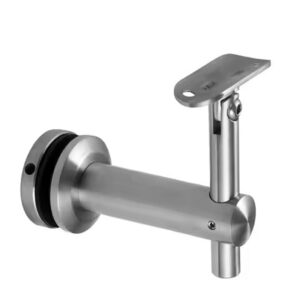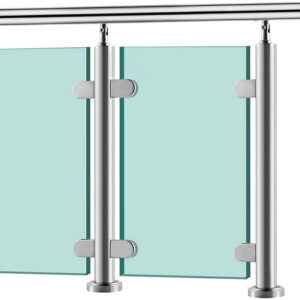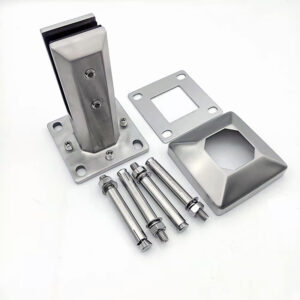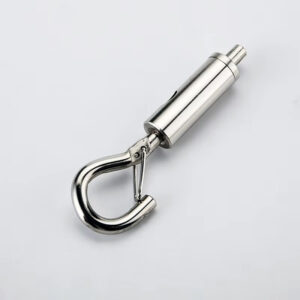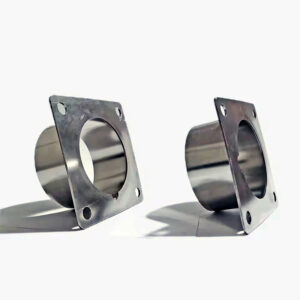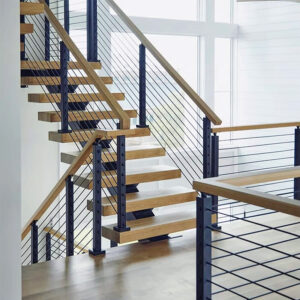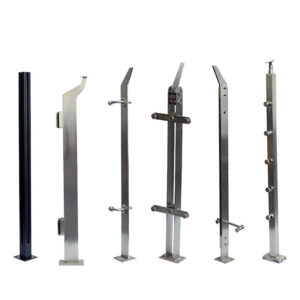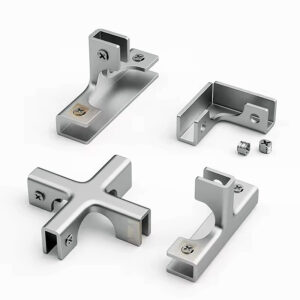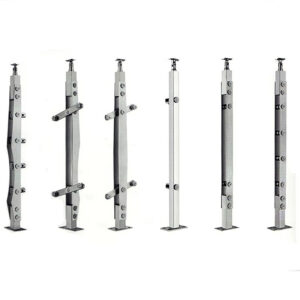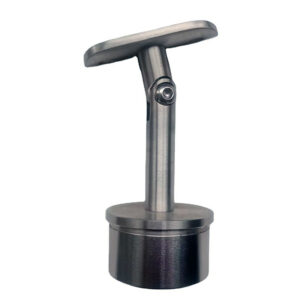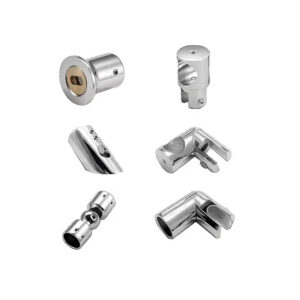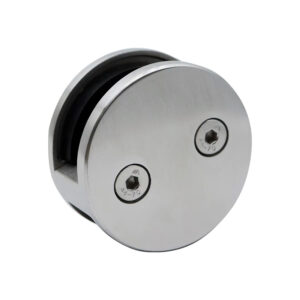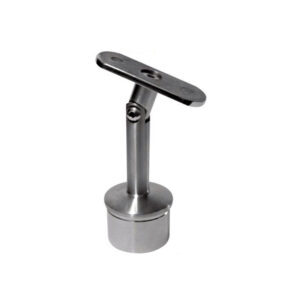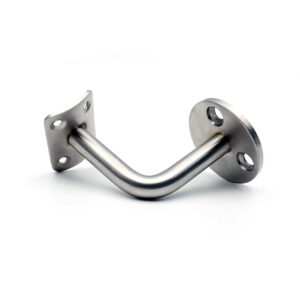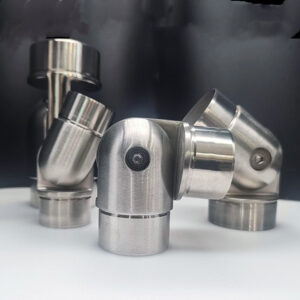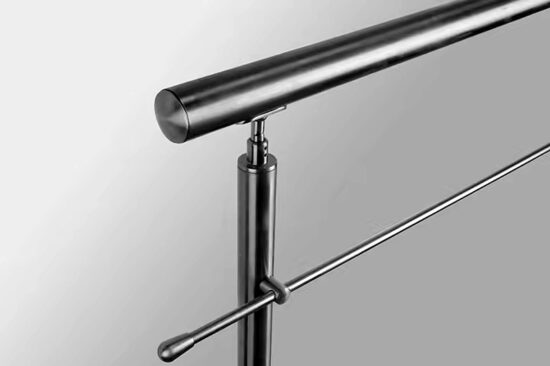Finding reliable continuous cap rail systems shouldn’t be complicated. After 23 years manufacturing stainless steel railing hardware, we’ve learned that contractors need systems that install efficiently, meet codes consistently, and deliver long-term performance without maintenance headaches. The difference between a smooth project and costly delays often comes down to choosing components that work together as an integrated system rather than trying to piece together individual parts.
Complete Continuous Cap Rail Systems Overview
Integrated System Components
Our continuous cap rail systems center on seamless integration between all components. The cap rail itself provides the continuous handrail surface while connecting systematically to posts, brackets, and mounting hardware. This modular approach eliminates field welding in most applications, reducing installation time and ensuring consistent quality.
Continuous Cap Rail Profiles:
- Round tube: 1.5″, 2″, and 2.5″ diameter options
- Rectangular: 2″ x 1″ and 3″ x 1.5″ profiles
- Square tube: 2″ x 2″ standard commercial grade
- Custom profiles available for specific architectural requirements
The key advantage lies in our precision continuous cap rail fabrication 316L processes that ensure consistent wall thickness and dimensional accuracy. Each length maintains proper tolerances for connector alignment, eliminating the gap issues common with lower-grade manufacturing.
Post Integration Systems
Continuous cap rail systems require posts engineered for specific load distributions. Our post mounting systems accommodate various installation scenarios:
Surface Mount Posts: Direct bolting to concrete or steel with adjustable leveling bases. Load capacity ranges from 200-400 lbs lateral force depending on mounting conditions and post spacing.
Core Mount Posts: For concrete applications requiring embedded anchoring. These systems distribute loads through the concrete structure rather than relying solely on anchor bolt shear strength.
Wall Mount Brackets: Intermediate support brackets for longer spans, available in fixed and adjustable configurations. Spacing typically ranges from 6-8 feet depending on rail profile and load requirements.
| Component Type | Load Capacity | Typical Spacing | Installation Time |
|---|---|---|---|
| Surface Mount Post | 200-400 lbs | 8-12 feet | 15-20 minutes |
| Core Mount Post | 300-500 lbs | 8-12 feet | 30-45 minutes |
| Wall Bracket | 150-250 lbs | 6-8 feet | 10-15 minutes |
| Rail Connectors | 200+ lbs | As needed | 5-10 minutes |
Material Selection for Performance
Marine grade continuous rail ODM applications demand 316L stainless steel for chloride resistance, while most commercial installations perform well with 304 grade stainless. The decision impacts both initial cost and long-term maintenance requirements.
304 Stainless Applications:
- Interior commercial spaces
- Standard residential projects
- Urban environments without heavy salt exposure
- Budget-conscious projects with 15-20 year service expectations
316L Stainless Applications:
- Coastal installations within 5 miles of saltwater
- Industrial facilities with chemical exposure
- Pool and spa environments
- High-traffic commercial spaces requiring 25+ year service life
Surface finish selection affects both appearance and maintenance. Brushed finishes hide minor scratches and wear better in high-traffic applications, while mirror polish provides premium appearance but requires more frequent cleaning to maintain quality appearance.
Technical Specifications and Load Performance
Structural Performance Data
Continuous cap rail systems must meet IBC handrail load requirements: 200 pounds applied in any direction along the top rail. Our testing exceeds these minimums with actual performance data:
| Rail Profile | Span Length | Deflection @ 200 lbs | Ultimate Load | Safety Factor |
|---|---|---|---|---|
| 2″ Round Tube | 8 feet | 0.25 inches | 850 lbs | 4.2x |
| 2.5″ Round Tube | 8 feet | 0.18 inches | 1,200 lbs | 6.0x |
| 3″ x 1.5″ Rectangular | 10 feet | 0.22 inches | 1,400 lbs | 7.0x |
| 2″ x 2″ Square | 8 feet | 0.20 inches | 1,100 lbs | 5.5x |
These performance numbers reflect real-world installation conditions with proper post spacing and mounting. Custom continuous rail manufacturing allows optimization for specific load requirements or span conditions beyond standard specifications.
Connection Hardware Specifications
System reliability depends on connection quality between rail sections and mounting points. Our precision cap rail hardware uses mechanical connections rather than field welding to ensure consistent performance:
Rail Connectors: Internal sleeve design maintains full structural continuity while allowing thermal expansion. Stainless steel set screws provide secure connection without external hardware visibility.
Post Connection Methods: Through-post systems pass the rail completely through the post with internal support sleeves. Side-mount brackets attach to post sides for retrofit applications or specific architectural requirements.
Expansion Joints: Required for runs exceeding 40 feet or when crossing building expansion joints. Our expansion connectors accommodate up to 2″ of movement while maintaining structural integrity.
Real-World Applications and Performance Results
Commercial Continuous Cap Systems Projects
Office Complex – Denver, CO: 2,400 linear feet of continuous cap rail systems across multiple buildings. 304 stainless with brushed finish. Installation completed 30% faster than original schedule due to modular design eliminating field fabrication. Project specified 2.5″ round tube with 8-foot post spacing.
“Modular components cut our installation time significantly. Everything fit exactly as specified, and the consistent quality eliminated field rework.” —Regional Contractor Association
Shopping Center – Phoenix, AZ: 1,800 feet of exterior railing with 316L stainless for desert climate durability. Rectangular 3″ x 1.5″ profile chosen for architectural appearance. System has performed without maintenance issues through three years of extreme temperature cycling.
Hospital Expansion – Boston, MA: Interior continuous handrail system meeting ADA compliance requirements. 2″ round tube with antimicrobial surface treatment. Installation coordinated around active hospital operations with minimal disruption.
Marine and Coastal Installations
Marine applications require marine grade continuous rail ODM engineering for salt spray and humidity exposure. Our 316L fabrication processes ensure consistent corrosion resistance across all system components.
Marina Walkways – San Diego, CA: 800 feet of continuous railing with 2.5″ round tube profile. After 18 months exposure, no visible corrosion or performance degradation. System specified with core-mount posts embedded in concrete deck.
Coastal Residential – Outer Banks, NC: Multi-unit housing project with 1,200 feet of balcony railing. 316L stainless throughout with brushed finish for low maintenance. Hurricane-rated design with enhanced post spacing and connection details.
| Project Type | Environment | Material Grade | Service Life | Maintenance Frequency |
|---|---|---|---|---|
| Interior Commercial | Climate Controlled | 304 Stainless | 20+ years | Annual cleaning |
| Exterior Urban | Standard Weather | 304 Stainless | 15-20 years | Bi-annual cleaning |
| Coastal/Marine | Salt Exposure | 316L Stainless | 25+ years | Quarterly cleaning |
| Industrial | Chemical Exposure | 316L Stainless | 20-25 years | Monthly inspection |
▶ Discuss Your Project Requirements ◀
Installation Systems and Technical Support
Modular Installation Advantages
Continuous cap rail fabrication 316L processes create components that install with standard tools and minimal skilled labor. Pre-fabricated sections arrive ready for assembly, eliminating field welding and reducing installation complexity.
Installation Sequence:
- Post installation and alignment verification (1-2 days for typical projects)
- Rail section connection and securing (same day as delivery)
- Final adjustment and inspection (half day)
- System testing and documentation (2-4 hours)
Average installation time runs 40-50% faster than field-fabricated systems due to precision manufacturing and modular design. This translates directly to labor cost savings and faster project completion.
Quality Control and System Integration
Twenty-three years of manufacturing experience has taught us that system reliability starts with component precision. Our quality control processes ensure dimensional accuracy within ±1/32″ for all connection points, eliminating field fitting issues.
Manufacturing Standards:
- All welds X-ray tested for structural connections
- Surface finish consistency maintained across production runs
- Dimensional verification before shipment
- Complete system compatibility testing
Field Support Services:
- Installation assistance and technical consultation
- Design review and code compliance verification
- Custom fabrication for unique architectural requirements
- Replacement parts and system expansion support
Esang Metal has developed these support systems based on real contractor feedback over thousands of successful installations.
▶ Connect with Our Technical Team ◀
Frequently Asked Questions
What’s the difference between 304 and 316L stainless for continuous cap rail applications?
316L contains molybdenum for enhanced corrosion resistance, particularly against chlorides. Choose 316L for coastal areas, pool environments, or industrial settings with chemical exposure. 304 stainless performs excellently in most commercial and residential applications at lower cost. Our marine grade continuous rail ODM services help specify the right material for specific environmental conditions.
How do modular systems compare to custom fabricated railings?
Modular continuous cap rail systems install 40-50% faster due to precision manufacturing and standardized connections. Quality remains consistent since components are fabricated under controlled conditions rather than in field environments. Initial cost may be slightly higher, but total project cost typically runs 15-25% lower due to reduced labor and faster completion.
What spacing requirements apply to posts in continuous cap rail systems?
Standard spacing ranges from 8-12 feet depending on rail profile and load requirements. 2″ round tube typically requires 8-foot spacing, while larger profiles can span 10-12 feet. Local codes may specify different requirements, particularly for industrial or high-traffic applications. Our engineering support helps optimize spacing for specific project conditions.
How do you handle thermal expansion in long continuous runs?
Runs exceeding 40 feet require expansion joints to accommodate thermal movement. Our expansion connectors allow up to 2″ of movement while maintaining structural integrity and smooth handrail surface. Joint placement depends on building design and local temperature ranges. Post-mounted systems accommodate more movement than wall-mounted configurations.
What maintenance do continuous cap rail systems require?
Maintenance requirements depend primarily on environment and material grade. Interior 304 stainless systems typically need annual cleaning with mild soap and water. Coastal 316L installations require quarterly cleaning to remove salt deposits. Industrial environments may need monthly inspection depending on chemical exposure. Properly installed systems require no structural maintenance for 15-25 years.
Can existing posts be integrated with new continuous cap rail systems?
Integration depends on existing post condition, spacing, and structural capacity. Our technical team evaluates existing installations and designs connection methods for compatible posts. Custom brackets and adapters allow integration in many cases, though structural verification is essential for code compliance.
System Selection and Competitive Analysis
Objective Performance Comparison
| System Type | Installation Speed | Consistency | Customization | Long-term Cost |
|---|---|---|---|---|
| Modular Continuous | Fast | High | Moderate | Low |
| Custom Fabricated | Slow | Variable | High | High |
| Standard Sectional | Moderate | Moderate | Low | Moderate |
| Welded Field Built | Very Slow | Low | High | Very High |
Selection Criteria by Project Type:
Choose Modular Systems For:
- Projects requiring fast completion
- Multiple similar installations
- Standard architectural requirements
- Budget-controlled projects
- Long-term maintenance considerations
Consider Custom Fabrication For:
- Unique architectural features
- Historic renovation requirements
- Complex geometric layouts
- Premium appearance projects
- Specific engineering challenges
Our Competitive Advantages
Twenty-three years of continuous cap rail manufacturing has created specific advantages that translate to project success:
Manufacturing Precision: Consistent dimensional accuracy eliminates field fitting problems and ensures reliable connections across all system components.
System Integration Experience: Complete understanding of how components work together prevents compatibility issues and reduces installation complexity.
Supply Chain Reliability: Established processes deliver components when needed, preventing project delays due to material shortages.
Technical Support Depth: Engineering assistance based on thousands of successful installations helps solve problems before they impact schedules.
Quality Consistency: Controlled manufacturing processes deliver uniform quality rather than depending on field conditions and variable skill levels.
“Best railing specs balance performance with long-term cost efficiency.” —Building Hardware Association
The key differentiator lies in treating continuous cap rail systems as integrated solutions rather than collections of individual parts. This systems approach, developed over decades of real-world applications, delivers the reliability that contractors need for successful project completion.
